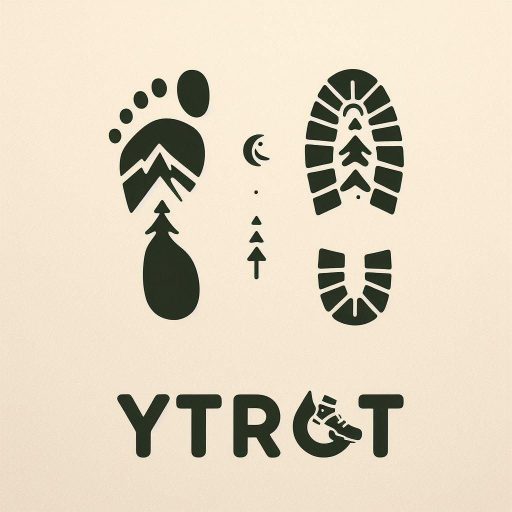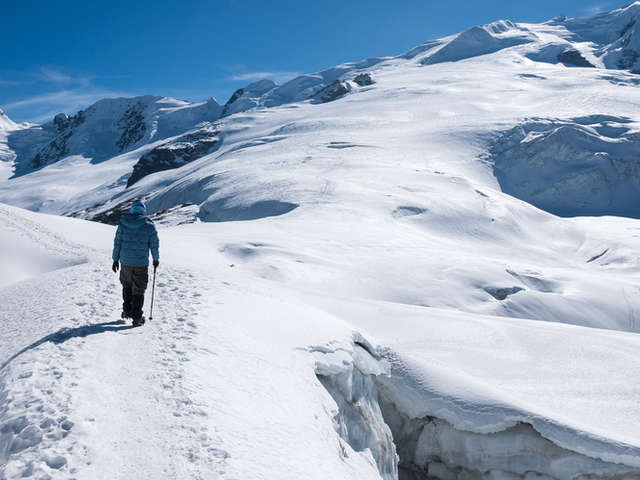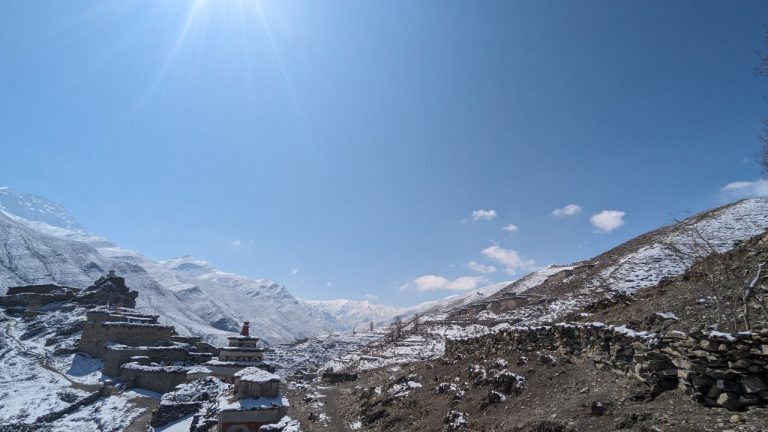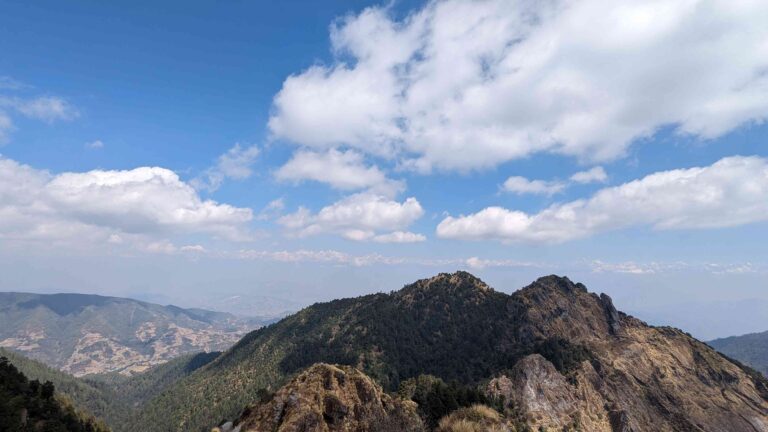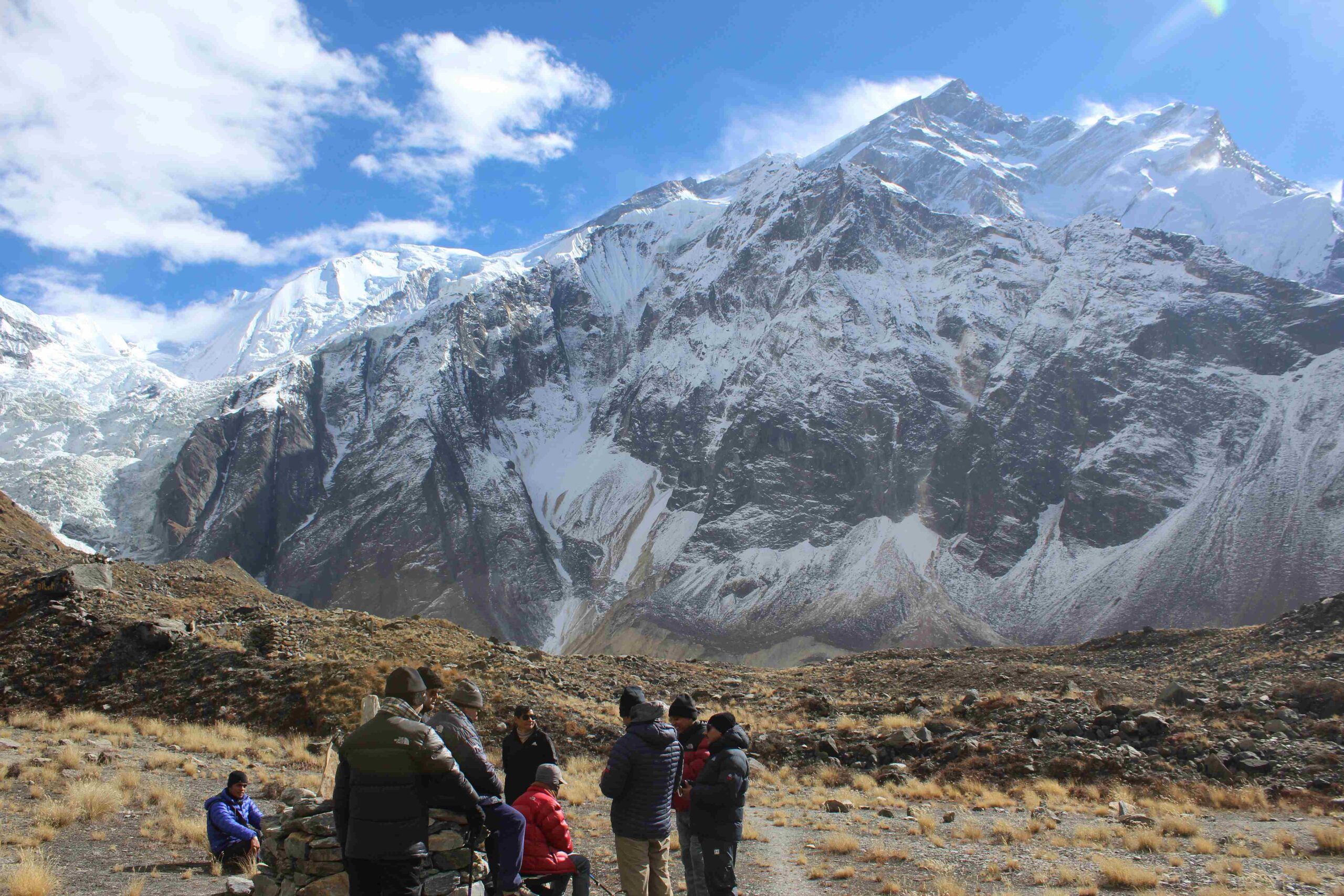Mera Peak Climb is one of the most captivating trekking peaks in Nepal’s Everest region. Mera Peak (6461 meters) trekking and summit offers a culturally enriching journey via far-flung gorgeous villages and forests, leading to a ascent to the summit of Mera Peak. The summit of Mera Peak is the highest trekking region in Nepal as the summit of the peak falls under “trekking peaks”.
Mera Peak Summit is located on the edge of the famous Khumbu Region and Mt. Everest. The summit of the peak has the vistas of five of the world’s eight thousanders peaks including Mount Everest, Kanchenjunga, Makalu, Khotse and Cho-Oyu.
Details of the Mera Peak Trek
| Name of the Trek | Mera Peak Climb |
| Trekking Region | Everest, Khumbu region |
| Trek Difficulty | Difficult due to elevation and summit |
| Trek Duration | 12-14 Days |
| Maximum Elevation | 6461 meters |
| Activity | Expedition, Climbing |
| Accommodation Type | Tea House, Homestays, Tents |
| Best For | Highest trekking peaks, views of the world’s tallest mountains |
Mera Peak Climb Difficulty
Although Mera Peak is not very challenging in terms of technical difficulty, it is high 6476m nevertheless and one is obviously bound to be exposed to the elements. Maintain a modest, manageable speed while paying attention to your hydration. Despite the fact that the snow route is not particularly difficult, it is a long day out and will wear you out. To move on a man rope, clip in, and keep a safe line and an effective tempo, you must feel comfortable. Crampon walking and using your walking axe to self-arrest are additional skills you must master.
For anyone with a little bit of mountaineering experience, climbing Mera Peak is a fantastic option. Due to its elevation, it is a difficult trekking peak, but only very basic technical climbing skills are needed.
Trek and Climb Permits for Mera Peak
The Nepal Mountaineering Association must issue permits for climbers to ascend Mera peak. These may be acquired directly or by means of a Nepali trekking agency.
Detailed Itinerary of Mera Peak
Day 1: Fly from Kathmandu to Lukla, Trek to Chhutang (2800m)
We will fly from Kathmandu to the Lukla airport in the early morning. Lukla is the gateway to Khumbu and the entire Everest region. We begin our walk in the dense jungle on the hillside beneath the Kalo Himal Ridge from Lukla. Before reaching Chhutang, staying with the group is the best course of action because there are multiple routes on this section that diverge from the main trail.
Day 2: Trek from Chhutang to Tuli Kharka (4100m)
As we move out from Chhutang, the trail progressively elevates and becomes steeper as we approach the crossing of Zatrawala Pass at 4600 meters. Our strenuous ascent to the pass’s summit is rewarded with breathtaking vistas of the other peaks, including Numbur Himal, Kongdi Ri, Karyolang Peak, and others. Before we drop all the way to Tuli Kharka, our walk travels along a flat path for nearly two hours.
Day 3: Trek from Tuli Kharka to Kothe (4182m)
Once you’ve finished breakfast, you’ll depart from Thuli Kharka towards Kothe (4,182m). Just in front of mountain views, the trek will begin with a gradual descent. You will catch your first glimpse of Mera Peak as soon as you approach the Hinku valley. You must descend through a short section of straight slope after taking in the view from the peaks. Hike slowly because rushing this particular trail could cause you to fall.
The Hinku River’s riverbed can be reached from the top with some effort. The remaining stretch of the day will require some effort to get to Kothe, which is located one upward climb from the bank of the Hinku River.
Day 4: Trek from Kothe to Thangnak (4326m)
From Kothe, our route follows the Hinku River’s ridge as it heads toward Gondishung. Walking in the Mera Peak’s shadow, you will reach Gondishung and have lunch there. Our route will take us past the roughly 200-year-old Lungsumgba Gompa. We continue on our journey along a rather simple walking path that takes us to Thangnak, a summer grazing region with shops and teahouses.
Day 5: Trek from Thangnak to Khare (5000m)
In direction of Hinku Nup and Shar Glaciers, our trail crosses the lateral moraine starting from Thangnak. From there, the walk requires a difficult ascent to reach Khare. The steep moraine pathways you must traverse make today’s walk a little challenging. From Dig Glacier to Dig Kharka, where you would be in front of Charpate Himal, is the route taken by the moraine. From Khare, we shall take in the breathtaking panorama of the Northern Face of Mera Peak.
Day 6: Acclimatization at Khare
To prevent physical and mental illness at higher elevations, acclimatization is crucial. We will take a day off at Khare to recover and explore as we are almost 5000 meters above sea level.
Day 7: Trek from Khare to Mera Peak Base Camp (5700m)
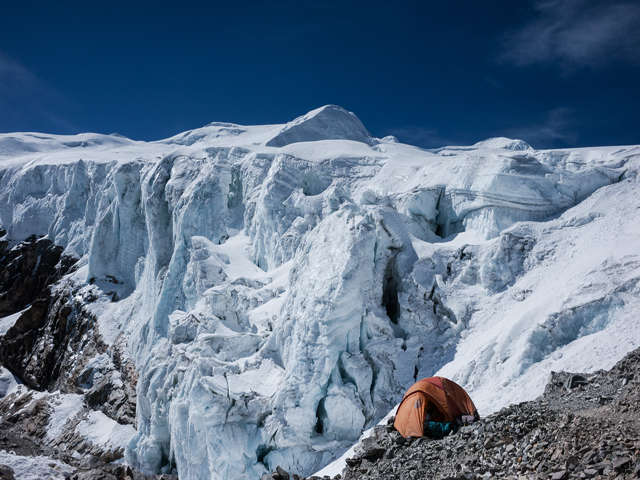
We set out from Khare on a brief but technically challenging climb to Mera Peak Base Camp. The Mera Glacier is reached via our trail’s steady ascent. In order to reach Mera Peak Base Camp, we shall first ascend steeply to the glacier’s summit and then traverse it. Set up the camp as soon as possible and get ready for further hiking.
Day 8: Summit Mera Peak and Climb Down to Khare (6461m)
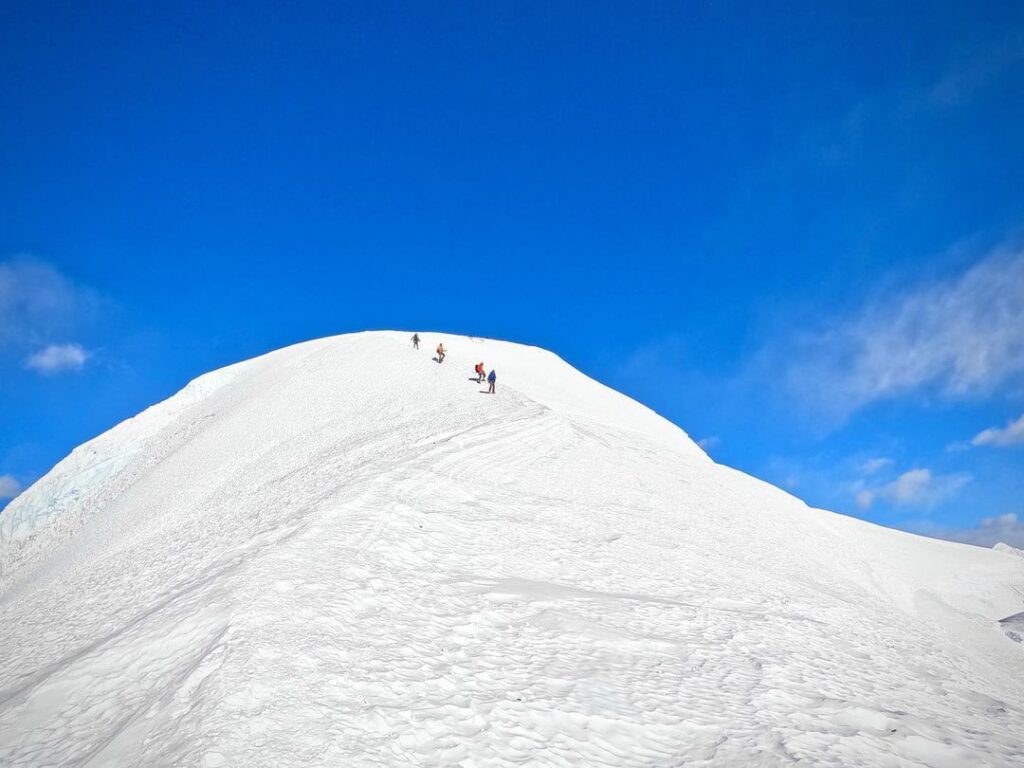
We set out early in the morning, properly prepared and acclimatized, with the goal of reaching the summit by noon. After noon, strong winds may make it difficult to reach the summit. When we reach the summit, we are greeted with breathtaking views of five 8000-meter peaks: Nuptse 7855 m, Chamlang 7319 m, Kanchenjunga 8586 m, Cho Oyu 8201 m, and Everest 8848 m. After spending some time at the summit, we will return to Khare for our overnight stay by taking the same path back down.
Day 9: Trek Back to Kothe
Before arriving in Kothe, you pass through Thangnak. Since most of the path is downhill, walking on downhill trails is simpler and faster. You will descend in elevation as you follow the same trail back from Khare to Kothe. The majority of your stroll will take place in a lush forest of oak, pine, and rhododendron trees.
Day 10: Trek to Tuli Kharka
After leaving Kothe, we hike uphill through a thick rhododendron forest that crosses the western portion of the Hinku valley on its way to Tuli Kharka. 6-7 hours From Tuli Kharka, we can see the south face, north face, and center face of Mera Peak in all its splendor.
Day 11: Trek to Lukla
The trek will be enjoyable as you set off from Thuli Kharka in order to go to Lukla in just one day. You will cross Zatrawala Pass one more time before arriving at Lukla. Before beginning the ascent downhill, you must first cross the pass.
